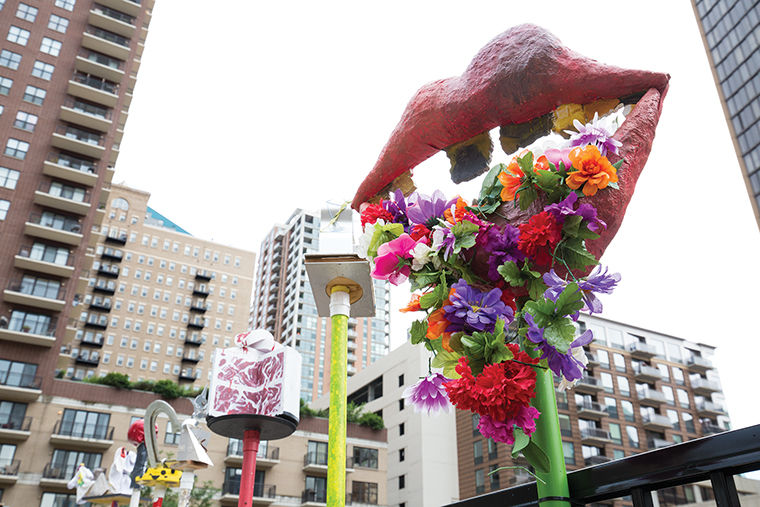Students encourage arts on campus
September 2, 2014

In an effort to increase the amount of student art showcased on campus and throughout the South Loop, Columbia is displaying student work in the Papermaker’s Garden, 754 S. Wabash Ave., which is home to various student-produced papier mâché designs, sculptures, paintings and live performances.
While the South Loop has always been architecturally distinguished, public art spaces have been in short supply. Columbia is changing that through an effort to boost the art presence on campus and the surrounding community, by offering space to display student work on campus buildings and throughout the South Loop.
Mark Kelly, vice president of student success, said Columbia’s student body has a lot of influence on the look and vibe of the South Loop.
“What’s so encouraging is to see the Columbia campus grow and begin to define this entire district,” Kelly said. “We have about 10,000 students in creative practice, and we’re moving beyond the boundaries or the demarcations of the individual buildings and creating a sense of a campus supporting a creative community.”
Kelly said the presence and power of the Wabash Arts Corridor—Columbia’s art-driven initiative to utilize open spaces on campus such as the side of building walls, vacant lots or empty storefronts on Wabash—and projects like the portraits shot by alumni that are displayed outside the Hilton Hotel solidify Columbia’s involvement in an art surge within the South Loop.
“What we’re seeing is tremendous momentum begin to develop for the Wabash Arts Corridor,” Kelly said. “This experiential learning that we offer our students is already in many ways getting pushed beyond the classroom. We’re pushing it into the entire South Loop.”
Kelly said Columbia students have shown great interest in making their mark in the South Loop and leaving a lasting impression even beyond their academic careers, adding that the interest is moving the South Loop in the right direction, a more arts-based area.
“I would imagine over the next couple of years we will see more student and alumni work begin to come to life, grace the buildings and the sidewalks of this district and when you come down the street, you know immediately that you’re in this community steeped in creative practice,” Kelly said.
Neysa Page-Lieberman, director of the Department of Exhibition & Performance, said Columbia’s presence in the South Loop has transformed the community in many ways. Having the creative youth and staff of an arts school attracts a wide variety of industries and new interest into The South Loop that otherwise may have been missed out on, Page-Lieberman said.
“Arts are always tied to the development of areas,” Page-Lieberman said. “Our presence is leading the way for the furthering of creativity, and the art in the South Loop has provided an extraordinary model for our neighbors, residents markand businesses.”
Columbia is aiming to continue its presence within the South Loop by adding new works of art throughout the area such as the “Moose Bubble-Gum Bubble,” a photo of a moose calmly blowing a bright pink bubble created by Columbia alumni Jacob Watts from his “We Are Animals” collection, which is scheduled to be displayed on the south-facing side of Columbia’s 33 E. Congress Parkway building a few weeks into the fall semester.
“Exposure to a variety of arts is really crucial for education in any discipline because it all comes back to creativity,” Page-Lieberman said.
Aside from Columbia administrators, local businesses and professionals within the South Loop are noticing the increased presence of art and how college students are contributing heavily.
Tristan Hummel, program manager and curator for the Chicago Loop Alliance, a foundation that works to promote and support artistic events and contributions to the South Loop, said college students play a crucial role in shaping the artistic atmosphere in the area.
“Columbia students expanding their creative footprints is a logical way to create something that’s pleasant to look at or interact with,” Hummel said.
Columbia supports students’ visions by opening its facilities to showcase those works in the wide variety of galleries across campus, and the Wabash Arts Corridor which is in complement to them, Kelly said.







